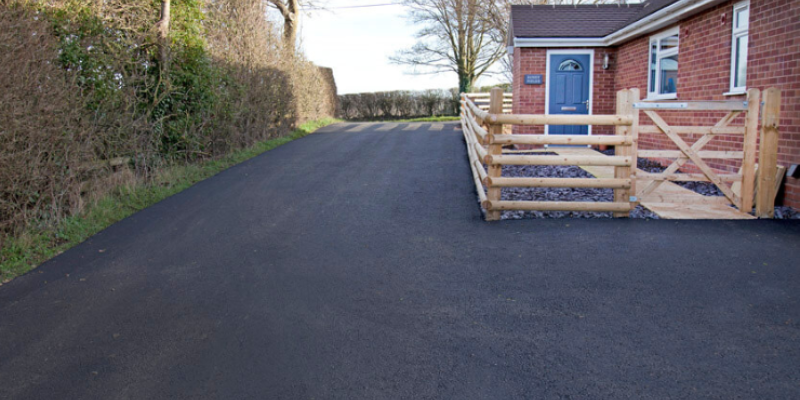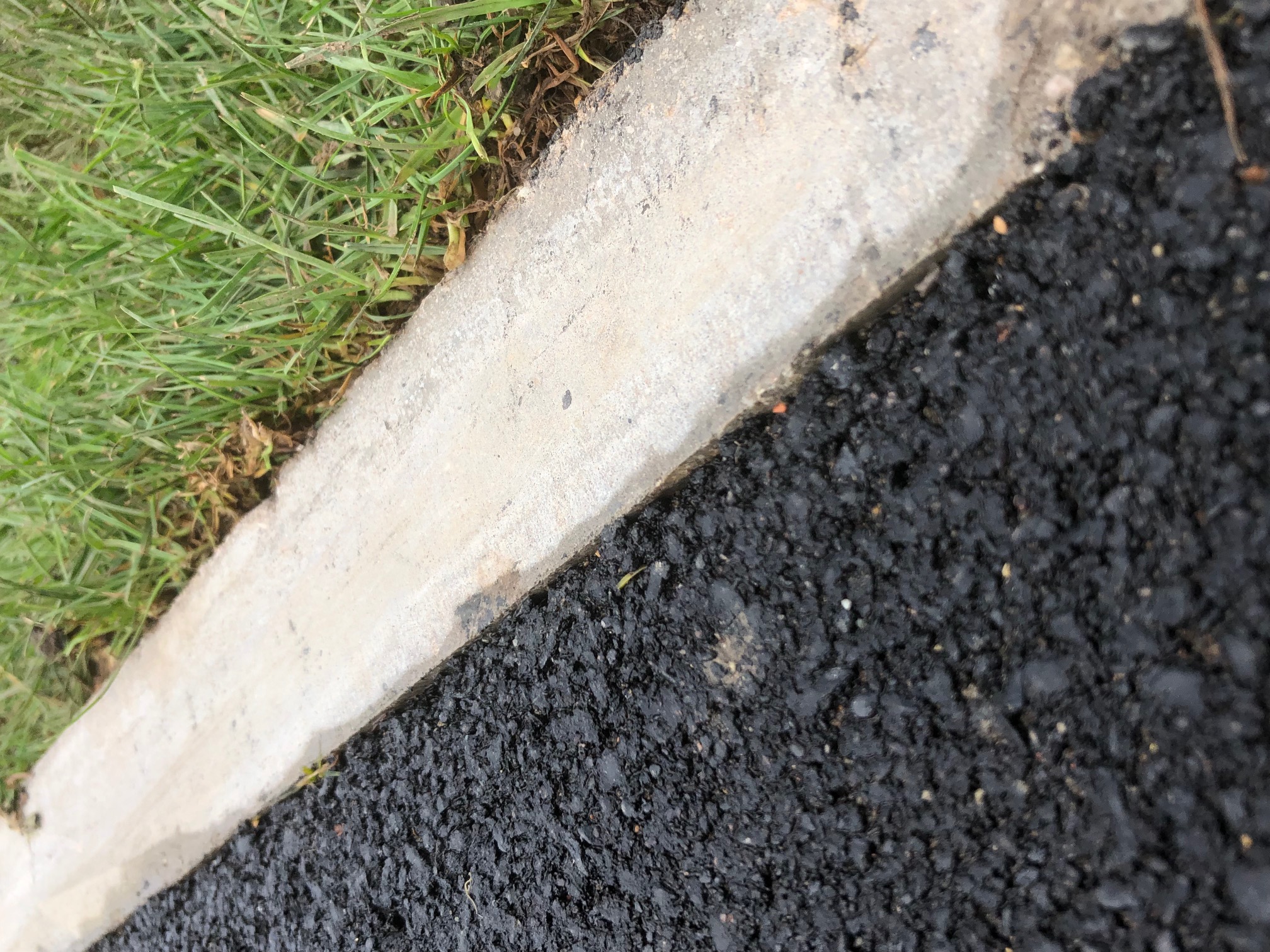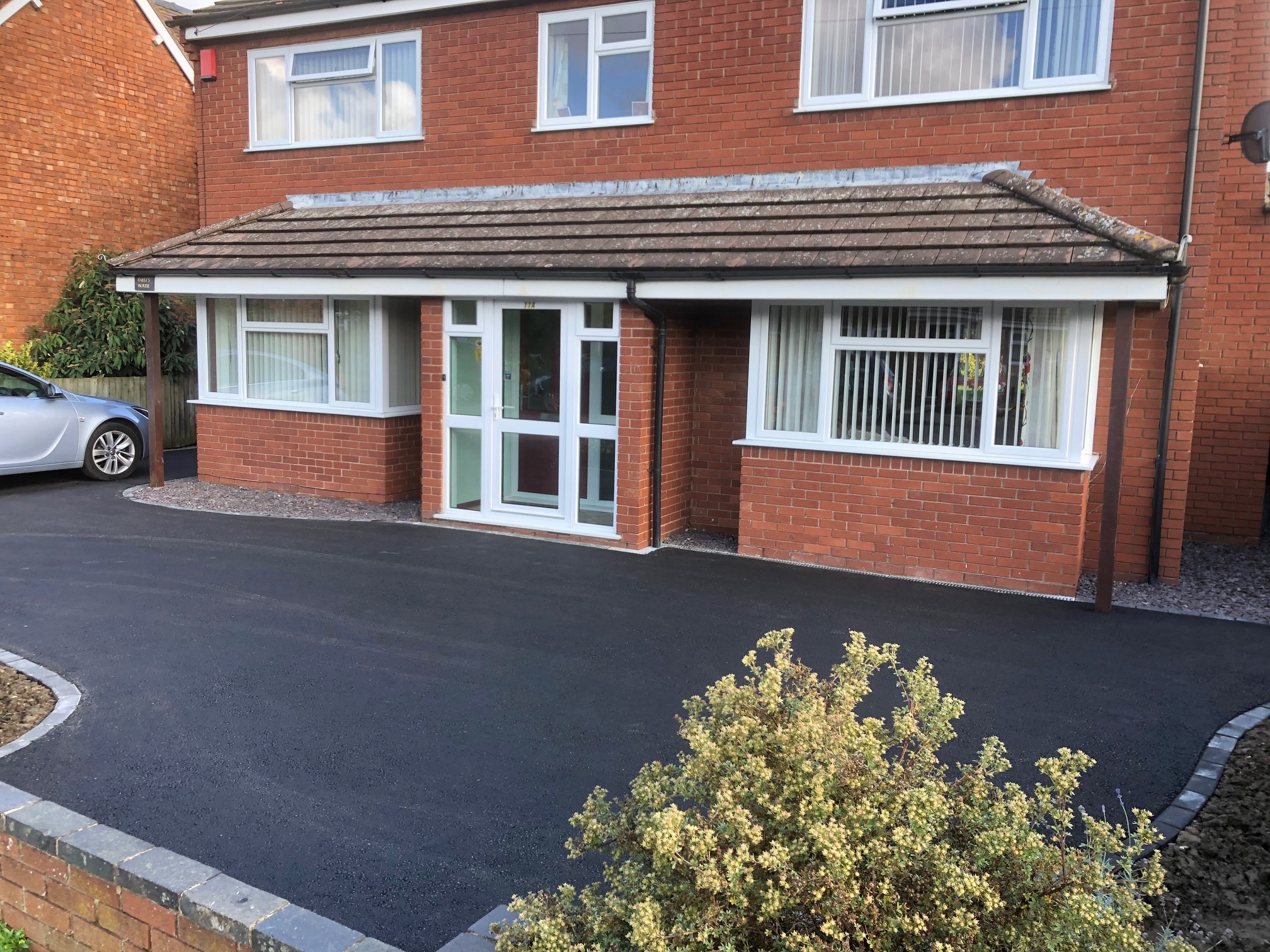
What is tarmac made of?
Blog
Tarmac holds significant importance in modern infrastructure today - from the perfect driveway and parking space to busy roads and motorways.
Its usage offers several benefits that contribute to the overall development and maintenance of urban areas. But, what is it actually made of? Let's take a closer look at the material and find out what makes tarmac...tarmac.
So, What is Tarmac?
Tarmac, also known as tarmacadam, is a resilient substance commonly used for surfacing roads. It is created by combining crushed stone or aggregate with tar, resulting in a durable mixture.

Historical background of tarmac as a paving and driveway material
Tarmac has a rich historical background and has developed significantly as a paving driveway material over the years. It was by Welsh inventor Edgar Purnell Hooley in 1902, and since the invention of tarmac, advancements in asphalt technology have contributed to its widespread use in road construction.
The development of better binders, additives, and mix designs has resulted in improved durability, flexibility, and resistance to weather and traffic conditions. Tarmac became widely used as a cost-effective and durable surfacing material for roads and driveways.
Understanding the Key Ingredients
Let's look closer at the materials that make up tarmac and why they help make for such a good driveway and paving material.
1) Tar
Tar is a thick, black, sticky substance that is derived from various natural materials, such as coal, wood, or petroleum. It is commonly used in road construction and maintenance as a waterproofing and adhesive agent.
Tar is a byproduct of the destructive distillation process, where organic materials are heated without air to produce volatile gases and leave behind the tar residue. It has traditionally been used for various purposes, including roofing, waterproofing, and wood preservation.
Tarmac production combines crushed stone, sand, and tar in specific proportions. This mixture is then heated into a hot mix tarmac to ensure proper tar distribution throughout the aggregates. The resulting tarmac mixture is laid and compacted to form a solid and smooth surface.
Easy of availability
Cold lay tarmac can be bought and used by consumers for small maintenance DIY work. However, the hot mix tarmac is necessary for a new tarmac drive and to get the tarmac driveway installed.
2) Aggregate Materials
Various types of aggregate materials are used in tarmac production to create a solid and durable pavement. The most common type of aggregate material used in tarmac is crushed rock.
Crushed rock refers to mechanically crushed stone or rocks that have been broken down into small, angular pieces. It is typically produced by crushing larger rocks such as granite, limestone, or basalt.
-
Size and Gradation: Crushed rock is available in different sizes and gradations, ranging from coarse to fine particles. The selection of the appropriate size and gradation depends on the specific requirements of the tarmac project.
-
Strength and Stability: Crushed rock aggregates provide strength and stability to tarmac pavements. The angular shape of the crushed rock particles interlocks with each other, creating a robust and compact structure that can withstand heavy loads and traffic.
-
Particle Interlock: The irregular shape and rough texture of crushed rock particles enhance particle interlock within the tarmac mixture. This interlocking mechanism improves the overall stability and resistance to deformation of the pavement.
-
Drainage and Permeability: Crushed rock aggregates have good drainage properties, allowing water to flow through the pavement. This helps prevent water accumulation on the surface, reduces the risk of skidding, and improves overall safety.
-
Base and Sub-base Applications: Crushed rock is commonly used in tarmac construction as a base or subbase material. It provides a stable foundation for the tarmac layers above and helps distribute the load evenly across the pavement.
-
Availability and Sustainability: Crushed rock is widely available in many regions, making it a cost-effective and readily accessible aggregate material for tarmac production. Additionally, using crushed stone as an aggregate promotes the reuse of natural resources and contributes to sustainable construction practices.
3) Filler Materials
Filler materials, such as limestone dust or mineral fillers, are added to the tarmac mixture to improve its workability and enhance its performance for roads and tarmac driveways.
Fillers help to fill voids between the aggregate particles, improving the overall compactness and stability of the pavement.
The primary purpose of filler materials is to enhance the properties of the tarmac mixture. They contribute to the densification of the asphalt mix, improving its resistance to deformation and reducing the permeability of the pavement.
-
Limestone Dust: Limestone dust, a byproduct of limestone crushing operations, is commonly used as a filler in tarmac. It is finely ground limestone that acts as a filler to improve the cohesion and workability of the asphalt mix.
-
Mineral Fillers: Other mineral fillers, such as hydrated lime, cement, fly ash, or slag, may also be used in tarmac production. These fillers help improve the pavement's stiffness, strength, and durability.
4) Additives
Various additives can be incorporated into the tarmac to enhance its characteristics. For example, polymer modifiers can improve the flexibility and durability of the pavement, making it more resistant to cracking and rutting. Other additives may enhance the workability, adhesion, or resistance to ageing of tarmac.
-
Silica, a commonly used additive in tarmac, plays a significant role in enhancing the strength of the pavement and reducing cracking.
-
Silica helps improve the flexibility and elasticity of the tarmac. Adding silica to the mixture allows the pavement to withstand temperature fluctuations and expansion and contraction due to thermal stress. This increased flexibility reduces the likelihood of cracking.
5) Heating Equipment
Tarmac is typically produced and placed using hot-mix asphalt technology. This involves separately heating the aggregates and bitumen before combining them at an asphalt plant. Heating equipment, such as drum mixers or batch plants, heat and mix the components to the required temperature for proper paving.

The importance of Tarmac and its popularity
Tarmac plays a crucial role in road construction, driveway and parking maintenance. Let's take a look at some key points highlighting its importance:
Durability and Longevity
Tarmac is renowned for its ability to withstand heavy traffic and adverse weather conditions. It provides a durable and long-lasting surface that can withstand the pressures of daily use.
Smooth Driving Experience
Tarmac roads offer a smooth driving experience due to their uniform and level surface. This reduces friction between tires and the road, improving fuel efficiency and reducing wear and tear on vehicles.
Safety and Skid Resistance
Tarmac surfaces provide excellent skid resistance, reducing the risk of accidents, especially during wet or icy conditions. It offers better traction for vehicles, enhancing overall road safety.
Cost Efficiency
Tarmac is a cost-effective paving material compared to other alternatives. Its installation and maintenance costs are relatively lower, making it an economical choice for road construction and maintenance projects.
Quick Construction and Repair
Tarmac can be laid quickly, minimising disruptions to traffic flow during construction or repair work. Rapid construction and repair times contribute to efficient transportation networks.
Recyclable and Sustainable
Tarmac is a highly recyclable material. When old or damaged tarmac is removed, it can be recycled and reused as part of new road construction or repair projects. This helps conserve natural resources and reduce waste.
Versatility
Tarmac is versatile and can be used for various road infrastructure projects, including highways, rural roads, parking lots, and airport runways. Its adaptability makes it a preferred choice for different types of road networks and parking (e.g. driveway).

What is tarmac used for?
Tarmac offers several benefits when used for paving projects. It provides a solid, durable surface that can withstand heavy traffic loads and adverse weather conditions. The smoothness of the tarmac offers excellent driving comfort and reduces noise levels. Additionally, tarmac has good resistance to skidding, making it safer for vehicles.
Driveways
Tarmac is popular for a new driveway due to its durability and aesthetic appeal. It can be customised with different colours and finishes to enhance the property's overall appearance.
Here at Henson Plant, we pride ourselves on our attention to detail. We can make you a beautiful tarmac driveway that fits your home perfectly. Most tarmac driveways have great aesthetic appeal and stand out in their functionality. Let's take a look at the benefits of a tarmac driveway.
-
Weather Resistance: Tarmac is resistant to various weather conditions, including extreme heat, cold, and moisture. It can expand and contract with temperature changes without causing significant damage to the surface.
-
Quick Installation: If installed correctly, a tarmac surface can be installed relatively quickly compared to other driveway types (e.g. concrete driveways, block paving driveway). A professional contractor can efficiently prepare the base and lay the tarmac, allowing for faster completion of the driveway project.
-
Aesthetic Appeal: A Tarmac driveway offers a sleek and clean appearance that can enhance the overall kerb appeal of your property. Additionally, tarmac can be customised with different colours and finishes to match your preferences and complement the aesthetics of your home.
-
Low Maintenance: A Tarmac driveway requires minimal maintenance compared to other driveway materials. Regular sweeping and occasional sealing can help extend the driveway's lifespan and keep it in good condition. Additionally, any repairs or patching can be done easily if needed.
-
Cost-effective: Tarmac is a cost-effective option for both an existing driveway and a new driveway. The material per square metre and labour costs of a tarmac driveway tend to be cheaper overall than materials like concrete or brick/ block paving. The relatively low cost of materials and efficient installation process make it a budget-friendly choice for homeowners.
-
Eco-friendly: Tarmac is a recyclable material, and it can be reused or recycled at the end of its lifespan. This makes it an environmentally friendly option for a driveway.
Overall, tarmac is a highly durable, weather-resistant, and visually appealing material for a driveway. Its smooth surface, low maintenance requirements, and cost-effectiveness make it a popular choice among homeowners.

Roads and Highways
Tarmac is widely used for constructing roads, highways, and motorways. Its strength and durability make it suitable for heavy-duty traffic and provide a smooth and safe driving surface. Here at Henson Surfacing, we have over 20 years of surfacing experience and know what it takes to install high-quality tarmac.
Parking, Pathways and Walkways
Similarly to a small driveway or a larger driveway, tarmac is commonly used for surfacing parking lots, providing a durable and long-lasting surface that can withstand the weight of vehicles and foot traffic.
Tarmac is ideal for creating pathways and walkways in parks, gardens, and public spaces. It offers a smooth surface for pedestrians and is wheelchair-accessible.
So, what's next?
Now that you know all the basics of what makes tarmac a fantastic material, it's time to decide what you want to do with that information.
Here at Henson Surfacing, we are committed to getting your perfect surface. Tarmac is an affordable option for driveway construction or resurfacing projects. Its relatively low installation cost, combined with its long lifespan and minimal maintenance requirements, makes it a cost-effective choice over the long term.
If you would like to learn more about what other materials and services we offer - from concrete, brick or even a gravel driveway, feel free to check out our resources page for all of the info!